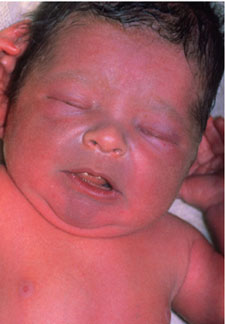
Blue Baby: A Comprehensive Guide to Cyanotic Congenital Heart Defects
Introduction
Cyanotic congenital heart defects (CCHDs) are a group of heart abnormalities that result in insufficient oxygenated blood flow to the body. This leads to a bluish tint to the skin, lips, and nail beds, a condition known as cyanosis. Blue baby is a term commonly used to describe infants with CCHDs.
Types of Cyanotic Congenital Heart Defects
There are several types of CCHDs, each with its unique characteristics:
- Tetralogy of Fallot (TOF): The most common CCHD, TOF involves four heart defects: pulmonary stenosis, ventricular septal defect (VSD), overriding aorta, and right ventricular hypertrophy.
- Transposition of the Great Arteries (TGA): In TGA, the aorta and pulmonary artery are switched, causing oxygenated blood to flow to the lungs and deoxygenated blood to the body.
- Tricuspid Atresia: This defect involves the absence of the tricuspid valve, preventing blood flow from the right atrium to the right ventricle.
- Pulmonary Atresia: In pulmonary atresia, the pulmonary valve is absent or narrowed, blocking blood flow to the lungs.
- Total Anomalous Pulmonary Venous Return (TAPVR): TAPVR occurs when the pulmonary veins connect to the right atrium instead of the left atrium, causing deoxygenated blood to return to the heart.
Causes and Risk Factors
The exact cause of CCHDs is unknown, but genetic factors, environmental influences, and maternal health conditions may play a role. Risk factors include:
- Family history of CCHDs
- Maternal infections during pregnancy (e.g., rubella)
- Maternal diabetes
- Certain medications taken during pregnancy (e.g., lithium)
Symptoms
The primary symptom of CCHDs is cyanosis, which is most noticeable in the lips, nail beds, and skin. Other symptoms may include:
- Shortness of breath
- Fatigue
- Poor feeding
- Failure to thrive
- Clubbing of fingers and toes (enlargement and curvature)
Diagnosis
CCHDs are typically diagnosed through a combination of physical examination, echocardiography (ultrasound of the heart), and cardiac catheterization (a procedure that involves inserting a thin tube into the heart to measure blood flow and pressure).
Treatment
Treatment for CCHDs depends on the specific defect and its severity. Options may include:
- Medications: To improve blood flow and reduce symptoms
- Surgery: To correct the heart defect and restore normal blood flow
- Heart transplantation: In severe cases, a heart transplant may be necessary
Prognosis
The prognosis for CCHDs varies depending on the type and severity of the defect. With early diagnosis and treatment, many children with CCHDs can live full and active lives. However, some defects may require ongoing medical management or multiple surgeries.
Management
After treatment, children with CCHDs require ongoing follow-up care to monitor their heart function and overall health. This may include:
- Regular echocardiograms
- Cardiac catheterizations
- Medications
- Lifestyle modifications (e.g., avoiding strenuous activity)
Complications
CCHDs can lead to several complications, including:
- Heart failure
- Stroke
- Pulmonary hypertension
- Arrhythmias (irregular heartbeats)
- Growth and developmental delays
Prevention
There is no sure way to prevent CCHDs, but certain measures can reduce the risk:
- Maintaining a healthy pregnancy
- Avoiding exposure to harmful substances during pregnancy
- Getting vaccinated against infections
- Managing chronic health conditions
Conclusion
Blue baby is a term used to describe infants with cyanotic congenital heart defects, a group of heart abnormalities that result in insufficient oxygenated blood flow to the body. These defects can vary in severity and require specialized treatment, including medications, surgery, and ongoing management. With early diagnosis and appropriate care, many children with CCHDs can live full and active lives.
